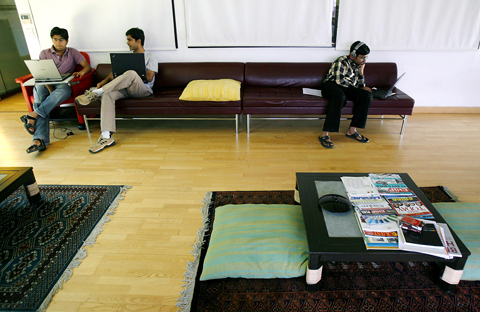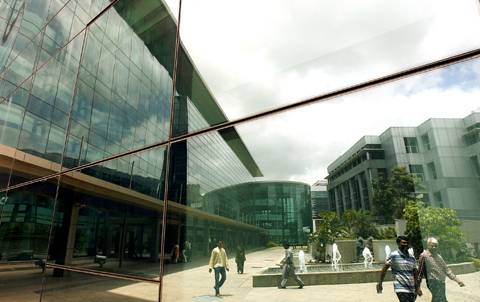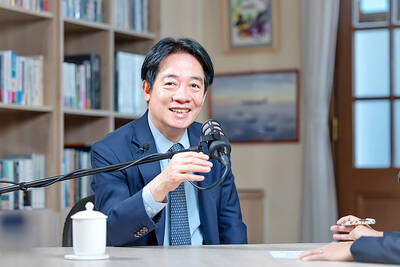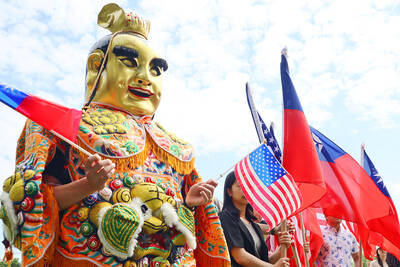Anew generation of researchers is being groomed half a world away from Microsoft’s sprawling Seattle headquarters at Microsoft’s research center on a leafy lane in India’s tech capital.
Complete with beanbags and coffee served in steel tumblers, the center is helping change the perception that India is no place for top-end research and development (R&D).
Staffed with about 60 full-time researchers, many of them Indians with doctorates from top US universities, the center is at the cutting edge of Microsoft’s R&D. It covers seven areas of research, including mobility and cryptography.

PHOTO: REUTERS
Its success, including developing a popular tool for Microsoft’s new search engine Bing, underscores the potential of R&D in India at a time when firms are keen to save money by using talented researchers abroad.
Showing off the Bing tool, which enables searches for locations with incomplete or even incorrect addresses, B. Ashok, a director of a research unit at the center, said the innovation would never have taken root if the R&D had been done in the US.
“It was completely inspired by the Indian environment, but is applicable worldwide,” he said.

PHOTO: REUTERS
India might seem like a natural location to expand offshoring into R&D, but this is hampered by problems that range from not enough home grown researchers to a lack of government support.
India produces about 300,000 computer science graduates a year, but only about 100 computer science doctorates.
“Students here are not exposed to research from an early age, faculties are not exposed to research and there’s no career path for innovation because there’s a lot of pressure to get a ‘real’ job,” said Vidya Natampally, head of strategy at the Microsoft India Research Center.
With few government incentives and an education system that emphasizes rote learning, India lacks the environment found in say, Silicon Valley, where universities and startups encourage innovation.
“China has a policy in place for R&D. We don’t,” Natampally said.
India’s lagging R&D environment is blunting the country’s edge, analysts warn. Rival China has pulled ahead, with more than 1,100 R&D centers, compared with less than 800 in India.
Aside from providing funding to encourage students to pursue doctorates, China offers tax breaks for R&D centers and its special economic zones provide infrastructure for high-tech and R&D industries.
India is also losing out in the patent stakes. In 2006 and 2007, just 7,000 patents were granted in India, compared with nearly 160,000 in the US.
“We’re nowhere near the US or even Israel when it comes to innovations,” said Praveen Bhadada at consultancy Zinnov, which estimates the R&D sector in India is worth about US$9.2 billion. “Our costs are low and our talent pool is ahead of China, Russia and Ukraine, but China gives specific incentives and produces way more PhDs.”
India is cheaper than China for R&D, but salaries have been rising by about 15 percent every year and may soon reach parity with China.
Microsoft and other firms have been working around the government’s indifference.
Cisco, IBM, Intel, Nokia, Ericsson and Suzuki Motor have all gone beyond low-end coding and tweaking products for the local market, with hefty investments and recruitment.
Their success shows India’s potential if the government starts supporting such ventures.
Texas Instruments and San Jose-based Cadence Design were among the first to set up R&D in India in the mid-1980s, drawn by the legions of English-speaking software engineers who could be hired at about 20 percent of the cost of engineers in the US.
The opening of India’s economy in the early 1990s and the establishment of the software services industry drew more foreign firms looking to cut costs and tap emerging markets.
“From when a few companies offshored non-critical design work, we have seen India emerge as a preferred destination for design and development of chip, board and embedded software,” said Jaswinder Ahuja, managing director of Cadence India.
Firms first focused on the “D” in R&D, but research has grown in importance and many of the facilities in India are now the largest outside their home base.
Half of Cisco’s core R&D work, including innovations in WiMAX and optical networks, and about 40 percent of SAP’s ideas for processes and product development come from India.
IBM’s India Research Labs do a “fair share of patenting,” boosting its record numbers every year, director Guruduth Banavar said in Bangalore.
Its new US$100 million-mobile communications research, Mobile Web, is the first time a big project has been driven from outside the US, he said.
“For a research lab, it’s the best environment to be in: You can see the problems and the opportunities,” said Banavar, who was previously at IBM’s lab in Boston and has, like several of his peers, returned to India to oversee operations.

Nvidia Corp yesterday unveiled its new high-speed interconnect technology, NVLink Fusion, with Taiwanese application-specific IC (ASIC) designers Alchip Technologies Ltd (世芯) and MediaTek Inc (聯發科) among the first to adopt the technology to help build semi-custom artificial intelligence (AI) infrastructure for hyperscalers. Nvidia has opened its technology to outside users, as hyperscalers and cloud service providers are building their own cost-effective AI chips, or accelerators, used in AI servers by leveraging ASIC firms’ designing capabilities to reduce their dependence on Nvidia. Previously, NVLink technology was only available for Nvidia’s own AI platform. “NVLink Fusion opens Nvidia’s AI platform and rich ecosystem for

‘WORLD’S LOSS’: Taiwan’s exclusion robs the world of the benefits it could get from one of the foremost practitioners of disease prevention and public health, Minister Chiu said Taiwan should be allowed to join the World Health Assembly (WHA) as an irreplaceable contributor to global health and disease prevention efforts, Minister of Foreign Affairs Lin Chia-lung (林佳龍) said yesterday. He made the comment at a news conference in Taipei, hours before a Taiwanese delegation was to depart for Geneva, Switzerland, seeking to meet with foreign representatives for a bilateral meeting on the sidelines of the WHA, the WHO’s annual decisionmaking meeting, which would be held from Monday next week to May 27. As of yesterday, Taiwan had yet to receive an invitation. Taiwan has much to offer to the international community’s

CAUSE AND EFFECT: China’s policies prompted the US to increase its presence in the Indo-Pacific, and Beijing should consider if this outcome is in its best interests, Lai said China has been escalating its military and political pressure on Taiwan for many years, but should reflect on this strategy and think about what is really in its best interest, President William Lai (賴清德) said. Lai made the remark in a YouTube interview with Mindi World News that was broadcast on Saturday, ahead of the first anniversary of his presidential inauguration tomorrow. The US has clearly stated that China is its biggest challenge and threat, with US President Donald Trump and US Secretary of Defense Pete Hegseth repeatedly saying that the US should increase its forces in the Indo-Pacific region

ALL TOGETHER: Only by including Taiwan can the WHA fully exemplify its commitment to ‘One World for Health,’ the representative offices of eight nations in Taiwan said The representative offices in Taiwan of eight nations yesterday issued a joint statement reiterating their support for Taiwan’s meaningful engagement with the WHO and for Taipei’s participation as an observer at the World Health Assembly (WHA). The joint statement came as Taiwan has not received an invitation to this year’s WHA, which started yesterday and runs until Tuesday next week. This year’s meeting of the decisionmaking body of the WHO in Geneva, Switzerland, would be the ninth consecutive year Taiwan has been excluded. The eight offices, which reaffirmed their support for Taiwan, are the British Office Taipei, the Australian Office Taipei, the